Browse Exhibits (18 total)
Practical Work: Chicago Woman’s Club Reformers, Criminal Women, and Delinquent Children, 1876-1920

As a powerful organization of women committed to reform, education, and philanthropy, the Chicago Woman’s Club (CWC) played a critical role in late nineteenth and early twentieth century Chicago. The pages below explore how the Club emerged during a period of high hope and intense anxiety in Chicago. They then investigate the women of the CWC and how they went about the “practical work” of reform. In particular, this exhibit explores how and why clubwomen worked with criminal women and delinquent children. Ultimately, “Practical Work” considers the ways in which clubwomen shaped ideas about crime and proper womanhood at the turn of the twentieth century.

“Practical Work” draws heavily from the collection of CWC annual announcements and images at the Women and Leadership Archives at Loyola University Chicago, in addition to utilizing Club minutes housed at the Chicago History Museum.
Jesuits and the Sciences 1540-1999

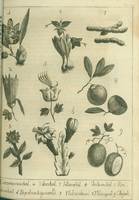
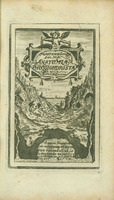
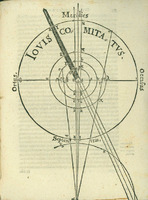
A remarkable characteristic of the Society of Jesus during the period of its first founding (1540-1773) was the involvement of its members in the sciences. The reasons for this interest in scientific study can be found in the nature and mission of the order itself. Saint Ignatius Loyola considered the acquisition of knowledge and the performance of mundane labor as spiritually profitable tasks, and this fostered in the Society an action-oriented, utilitarian mentality sympathetic to scientific study. In addition the role of the Society as the "schoolmasters of Europe" meant that the pedagogically (and scientifically) useful principles of rationality, method, and efficiency were highly valued. The tight-knit organization of the Society created among its members habits of cooperation and communication, essential for the gathering and exchange of scientific information. Finally, mission work in Asia and the Americas gave the Jesuits opportunities and impetus to study and record the phenomena of these new worlds.
Hidden Loyola
Exhibit based on the famous yearly tour of hidden architectural treasures at the Lake Shore Campus given by Michael Grace, S.J., the images in this exhibit highlight the great architecture of Loyola and how the campus has been transformed over the years.
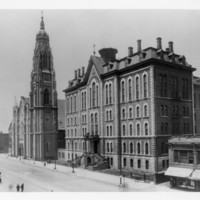
Edifying and Curious Letters
Jesuit Accounts of the Americas, 1565-1896
This exhibit is based on a physical exhibit originally created in 1992 as part of the international symposium "Agents of Change: The Jesuits and Encounters of Two Worlds," held at Loyola University Chicago, October 8-10, 1992. The physical exhibit was arranged according to the major themes of that symposium: Jesuits as Explorers and Geographers in the Americas; Jesuits as Educators in the Colonial Americas; Jesuits as Missionaries in the Colonial Americas; and Jesuit Chroniclers and Historians as Informants to Europe about the Americas.
The items in this exhibit are drawn from the Edward A. Cudahy Collection of Jesuitica in the Rare Book collection at Loyola University Chicago. This collection, which consists mainly of works by or about Jesuits published before 1830, represents a cross-section of Jesuit intellectual activity in religion, philosophy, literature, science, and the arts. Strengths within the collection include mission history, Jesuit drama and poetry of the Baroque era, works by Jesuit scientists, and anti-Jesuit literature.
Where known, references are given to citations in Augustin de Backer's Bibliothèque de la Compagnie de Jésus (Nourv. Ed. Par Carlos Sommervogel; Bruxelles, 1890-[1932]).
Roman Africa

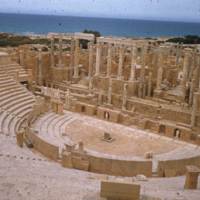
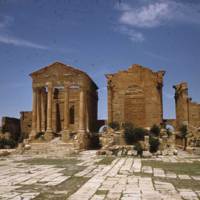
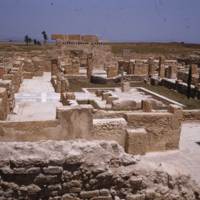
Former Classical Studies faculty member Rev. Raymond V. Schoder, S.J., spent a lifetime accumulating what would become an over 17,000 image slide collection. He is best known for his photography of ancient classical sites in Greece, Italy, and North Africa, many of which were used to illustrate his books and lectures. This exhibit focuses on his lectures on Roman North Africa. The Roman Africa section of the Schoder Slide Collection consists of 439 slides; Schoder's lectures, however, often only used 80 of those slides. This exhibit attempts to duplicate Schoder's lectures on Roman Africa through his notes using the original 80 slides and augmented by additional slides taken by him.
Note: in excerpts from Schoder's lecuter notes 'X' identifies slides that he skipped over or removed from his lectures as needed.
Gerard Manley Hopkins, S.J.

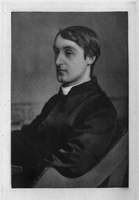
Raymond V. Schoder, S.J., lectured widely on many topics including Gerard Manley Hopkins, S.J. This exhibit highlights Schoder's lectures on Hopkins' life, travels, and poetry using both his lecture notes and photographs he took to accompany his lectures.
Loyola Timeline 1870 - 2015

This timeline of Loyola University of Chicago history is based upon "Loyola University of Chicago: The First 110 Years" by Robert C. Hartnett, S.J., and Richard M. Menges; "One Hundred Years of Knowledge in the Service of Man"; "Highlights of the Development of Loyola University of Chicago, 1870-1977" by Robert C. Hartnett, S.J.; "Chronology of Loyola University of Chicago"; and "Loyola at 70" and an unpublished manuscript history of Loyola University by Joseph Roubik, S.J.

Loyola Traditions

As with any institution over time, the spirit of a place - its buildings, people, and community - moves traditions to unfold. A simple action evolves into a rite of passage or an annual event; a particular spot becomes a gathering place for friends long after their student days are past. Loyola's traditions have been shaped by thousands of students, faculty, staff, alumni, and friends who have passed through its doors since 1870 and reflect our unique Jesuit character. On these pages we invite you to learn more about the history, traditions, and customs that are Loyola University Chicago.
If you would like to suggest a tradition or custom that you remember from your time at Loyola, please contact Kathy Young, University Archivist, at kyoung3@luc.edu or Nicole LeDuc Meehan, Director of the Alumni Association, at nleduc@luc.edu, 312-915-7660.